NVIDIA Announces the GeForce RTX 20 Series: RTX 2080 Ti & 2080 on Sept. 20th, RTX 2070 in October
by Ryan Smith on August 20, 2018 4:00 PM ESTGeForce RTX 2080
Moving down the stack, we have the GeForce RTX 2080. Normally the king of an NVIDIA launch product stack, this cycle’s x80 card is instead playing second-seat to the RTX 2080 Ti. However in terms of pricing and the general market position, it remains in a similar position.
| NVIDIA GeForce x80 Specification Comparison | ||||||
| RTX 2080 Founder's Edition |
RTX 2080 | GTX 1080 | GTX 980 | |||
| CUDA Cores | 2944 | 2944 | 2560 | 2048 | ||
| ROPs | 64? | 64? | 64 | 64 | ||
| Core Clock | 1515MHz | 1515MHz | 1607MHz | 1126MHz | ||
| Boost Clock | 1800MHz | 1710MHz | 1733MHz | 1216MHz | ||
| Memory Clock | 14Gbps GDDR6 | 14Gbps GDDR6 | 10Gbps GDDR5X | 7Gbps GDDR5 | ||
| Memory Bus Width | 256-bit | 256-bit | 256-bit | 256-bit | ||
| VRAM | 8GB | 8GB | 8GB | 4GB | ||
| Single Precision Perf. | 10.6 TFLOPs | 10.1 TFLOPs | 8.9 TFLOPs | 5.0 TFLOPs | ||
| "RTX-OPS" | 60T | 60T | N/A | N/A | ||
| TDP | 225W | 215W | 180W | 165W | ||
| GPU | Unknown Turing | Unknown Turing | GP104 | GM204 | ||
| Architecture | Turing | Turing | Pascal | Maxwell | ||
| Manufacturing Process | TSMC 12nm "FFN" | TSMC 12nm "FFN" | TSMC 16nm | TSMC 28nm | ||
| Launch Date | 09/20/2018 | 09/20/2018 | 05/27/2016 | 09/18/2014 | ||
| Launch Price | $799 | $699 | MSRP: $599 Founders $699 |
$549 | ||
NVIDIA has not disclosed anything about the GPU used here. As I highly doubt it’s using Big Turing, I expect we’re looking at the next Turing down, which would presumably be TU104. And although we don’t have die size or transistor counts, in terms of functionality it appears to be a straight smaller version of Big Turing, featuring a proportional number of CUDA, tensor, and RT cores.
Altogether we’re looking at 2944 CUDA cores paired with what should be 368 tensor cores. I expect that like the RTX 2080 Ti, for the RTX 2080 what we’re looking at is not a fully-enabled TR104 part, especially as the similar Quadro RTX 5000 has slightly better specifications. Also like the RTX 1080 Ti, clockspeeds have dropped a bit from generation to generation, as the base clock is down to 1515MHz and the boost clock to 1710MHz. All told we’re looking at a pure CUDA core compute throughput of 10.1 TFLOPs, about 13% higher than the GTX 1080. Or if we compare it to the RTX 2080 Ti, we’d see around 75% of the expected compute/tensor performance, which is only a bit larger than the jump we saw between the GTX 1080 and GTX 1080 Ti.
Meanwhile it’s clear that the card will come with a fully enabled memory bus, meaning we’re looking at 8GB of GDDR6 running at 14Gbps, on top of a 256-bit memory bus. Relative to the GTX 1080 this is an even more significant 40% increase in memory bandwidth.
As for TDPs, they’ve gone up for this band of cards. The stock RTX 2080 will have a 215W TDP, up 30W from the GTX 1080’s 180W TDP, and an even bigger increase if we look at GTX 980’s 165W TDP. It’s no secret that NVIDIA is fighting a losing battle with Moore’s Law here, and barring massive efficiency improvements, there is a need to increase TDPs to keep up overall performance. TU104 is undoubtedly also a big chip, and without a full node shrink, it would seem that NVIDIA has to pay a power penalty instead. In the meantime this higher TDP also negates some of the RTX 2080 Ti’s power disadvantage, as now that gap is just 35W instead of 65W.
Past that, NVIDIA is offering an overclocked Founders Edition card here as they are with the RTX 2080 Ti. The RTX 2080 Founders Edition will ship with an 1800MHz boost clock (up 5%), and the TDP will be 10W higher at 225W.
Power delivery for the 2080 FE and similar reference cards will be a 6pin + 8pin configuration, which on paper is good for 300W. NVIDIA's official PCB photo for the card shows a similar VRM configuration as the 2080 Ti, so that means we're looking at what appears to be 10 phases driving the GPU among 13 phases in total. NVIDIA has also disclosed that the RTX 2080 Founders Edition in particular has an overclocking power limit of 280W, confirming earlier claims about being more overclocking-friendly than past reference designs.
The Founders Edition card will also retain the same dual fan reference cooling design as its bigger sibling, right down to its 10.5-inch long physical dimensions. This also includes the card-length vapor chamber that's used on the RTX 2080 Ti as well. So the only difference between the two cards, other than the power connectors, will be on the inside. Which also means that NVIDIA’s 2080 reference PCB will use the same 3x DisplayPort + 1x HDMI + 1x USB Type-C configuration as the other card.
Finally, in terms of pricing, the RTX 2080 will also be seeing a price hike over the last generation. Though not as significantly as the RTX 2080 Ti. The MSRP for a stock card will be $699, $100 over the launch price of the GTX 1080 and $200 over its current list price. Meanwhile the Founders Edition card will carry a further $100 premium, pushing it to $799. Finally, like the RTX 2080 Ti, the 2080 will be shipping in the first wave of cards on September 20th.
GeForce RTX 2070
The final member of the new GeForce RTX family is the GeForce RTX 2070. Traditional for its roots, this is the “value” enthusiast card, giving up some of the RTX 2080’s performance in exchange for a lower price. Though with prices starting at $499, “value” and “cheap” are not the same thing.
| NVIDIA GeForce x70 Specification Comparison | ||||||
| RTX 2070 Founder's Edition |
RTX 2070 | GTX 1070 | GTX 970 | |||
| CUDA Cores | 2304 | 2304 | 1920 | 1664 | ||
| ROPs | 64? | 64? | 64 | 64 | ||
| Core Clock | 1410MHz | 1410MHz | 1506MHz | 1050MHz | ||
| Boost Clock | 1710MHz | 1620MHz | 1683MHz | 1178MHz | ||
| Memory Clock | 14Gbps GDDR6 | 14Gbps GDDR6 | 8Gbps GDDR5 | 7Gbps GDDR5 | ||
| Memory Bus Width | 256-bit | 256-bit | 256-bit | 256-bit | ||
| VRAM | 8GB | 8GB | 8GB | 4GB | ||
| Single Precision Perf. | 7.9 TFLOPs | 7.5 TFLOPs | 6.5 TFLOPs | 3.9 TFLOPs | ||
| "RTX-OPS" | 45T | 45T | N/A | N/A | ||
| TDP | 185W | 175W | 150W | 145W | ||
| GPU | Unknown Turing | Unknown Turing | GP104 | GM204 | ||
| Architecture | Turing | Turing | Pascal | Maxwell | ||
| Manufacturing Process | TSMC 12nm "FFN" | TSMC 12nm "FFN" | TSMC 16nm | TSMC 28nm | ||
| Launch Date | 09/20/2018 | 09/20/2018 | 06/10/2016 | 09/18/2014 | ||
| Launch Price | $599 | $499 | MSRP: $379 Founders $449 |
$329 | ||
Like the 2080, we don’t know the specific GPU being used here. But it’s almost certainly a somewhat significantly cut-down TU104. NVIDIA has shaved off several SMs here, resulting in 2304 CUDA cores and what should be 288 tensor cores. Meanwhile ray tracing performance is rated at 6 GigaRays/second.
Like the other RTX cards, clockspeeds have dropped a bit versus the previous generation; the base clock now starts at 1410MHz, and the boost clock is 1620MHz. On paper then, compute throughput works out to 7.5 TFLOPs, up 15% from GTX 1070. Or if we compare it to the 2080, the 2070 should deliver around 75% of its bigger sibling’s compute performance, which makes the jumps between the 2070, 2080, and 2080 Ti all very symmetrical. This is also an ever so slightly smaller gap than what was between the GTX 1080 and GTX 1070.
Also like the RTX 2080, this appears to be a fully enabled memory configuration. Meaning we’re looking at 8GB of GDDR6 running at 14Gbps, on top of a 256-bit memory bus. Relative to the GTX 1070 this is the single greatest bandwidth increase of all of the RTX cards; the 2070 will enjoy a 75% increase in memory bandwidth over its Pascal predecessor, as the GTX 1070 never did use GDDR5X.
TDPs have gone up here as well. The RTX 2070 is rated for 175W, up from 150W for the GTX 1070, and 145W for the GTX 970. As with the RTX 2080, it looks like NVIDIA is paying for their performance and new features via higher power consumption in lieu of a full node shrink.
Past that, NVIDIA is offering an overclocked Founders Edition card here as well. The RTX 2070 Founders Edition will ship with a 1710MHz boost clock (up 6%), and the TDP will be 10W higher at 185W.
Power delivery for the 2080 FE and similar reference cards will be a single 8pin connector, which on paper is good for 225W. Notably, thanks in part to cutting out a power connector, this card is shorter than the RTX 2080 – as is often the case for x70 cards – and comes in at just 9-inches long. Consequently, while the Founders Edition card retains the same basic industrial design as the other RTX cards, it’s not going to be the same exact shroud, owing to the shorter size and lack of an NVLink connector.
Otherwise in terms of display outputs, NVIDIA’s reference PCB is the same as the other cards: 3x DisplayPort + 1x HDMI + 1x USB Type-C.
Finally, in terms of pricing, like all the other RTX cards, the RTX 2070 will be seeing a price hike over the last generation. The MSRP for a stock card will be $499, $120 over the launch price of the GTX 1070 and around $100 over its current list price. Meanwhile the Founders Edition card will carry a further $100 premium, pushing it to $599.
However unlike the top two cards, the RTX 2070 will not be shipping on September 20th. While NVIDIA has announced the card, both their Founders Edition card as well as partner cards will not be shipping until some point in October. Consequently, pre-orders are not available at this time. Which coincidentally brings us to our final point…
Pre-Orders Starting Now
As mentioned in the introduction to this article, NVIDIA and its board partners are already taking pre-orders on the new GeForce RTX cards. As a general piece of advice, we caution against pre-ordering new hardware until it can be properly reviewed by a reputable third party (i.e. us). However in the case of the GeForce RTX series I feel that this is especially important, as NVIDIA has provided no meaningful guidance when it comes to performance expectations. So we don’t even know how well these cards will perform relative to their Pascal predecessors on current-generation games.
None the less, unless NVIDIA is sitting on a massive launch inventory, I have to admit that I have trouble believing that retailers will remain in stock ahead of the September 20th launch. Launch-day sell-outs have become common for video cards, and even with the unfortunate use of pre-orders here, it wouldn’t be surprising to see pre-orders run out before we reach the 20th. So potential buyers will have some hard choices to make if they want to ensure they have a card on launch day.
Meanwhile as far as pricing is concerned, while NVIDIA does have their $999/$699/$499 baseline MSRPs, the reality is that you won’t be able to find cards at these prices. And likely won’t be able to for weeks or months. The launch-day sell-out phenomena means that board partners have prioritized higher-end card designs, with pricing to match. As of this afternoon, I have not seen an RTX 2080 card listed below $749, and most are at or over the $799 price tag of the Founders Edition card. The gap is even bigger for RTX 2080 Ti cards, where I haven’t seen any for less than $1150. So there’s certainly merit to any arguments that at least for the launch, prices are closer to $1150 and $750 respectively.
None the less, if you are looking to pre-order a card, Newegg, Amazon, and NVIDIA are all taking pre-orders while they last. So at the very least there is a reasonable choice of retailers to choose from. We have not had a chance to dig into any of the board partners’ cards yet, but it would appear that this is going to be a semi-custom launch: that is, everyone is shipping a card using NVIDIA’s reference PCB and then their own custom cooler on top of it. So cooling aside, all of the launch-day cards should offer similar features.


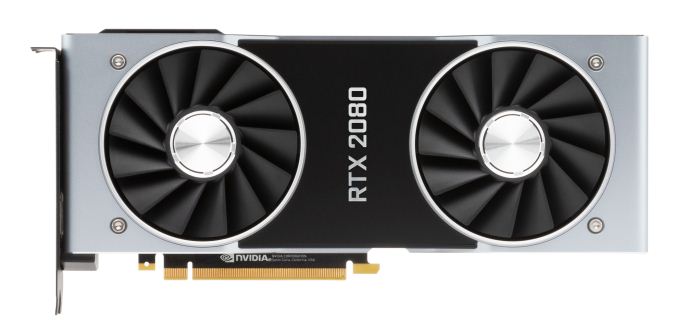
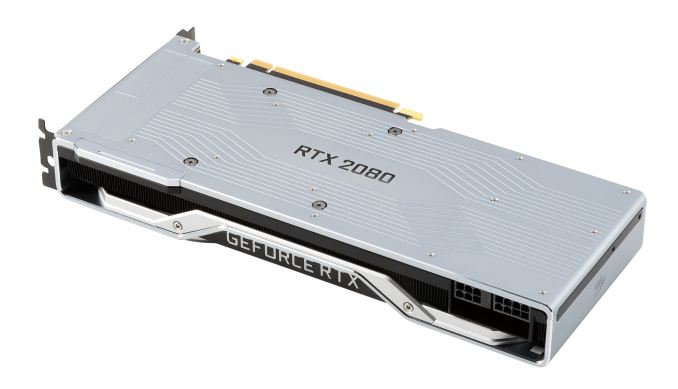
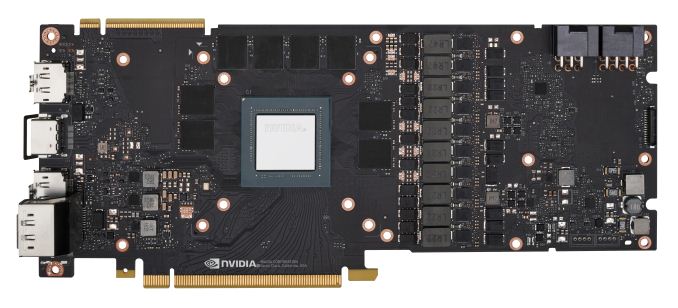
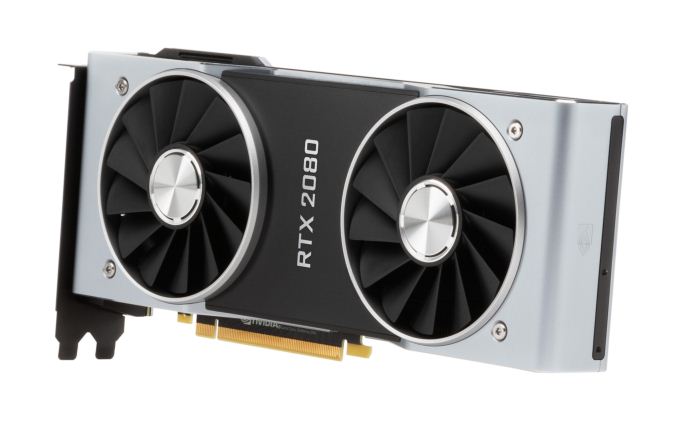
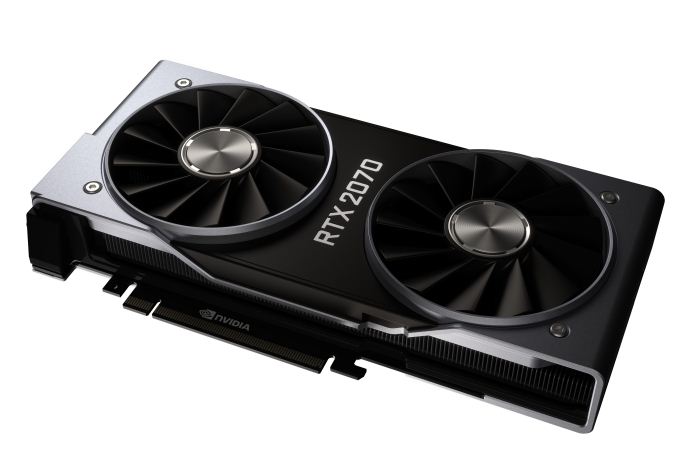
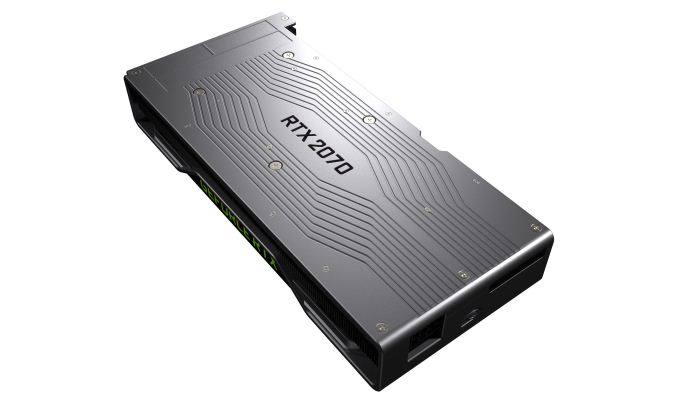
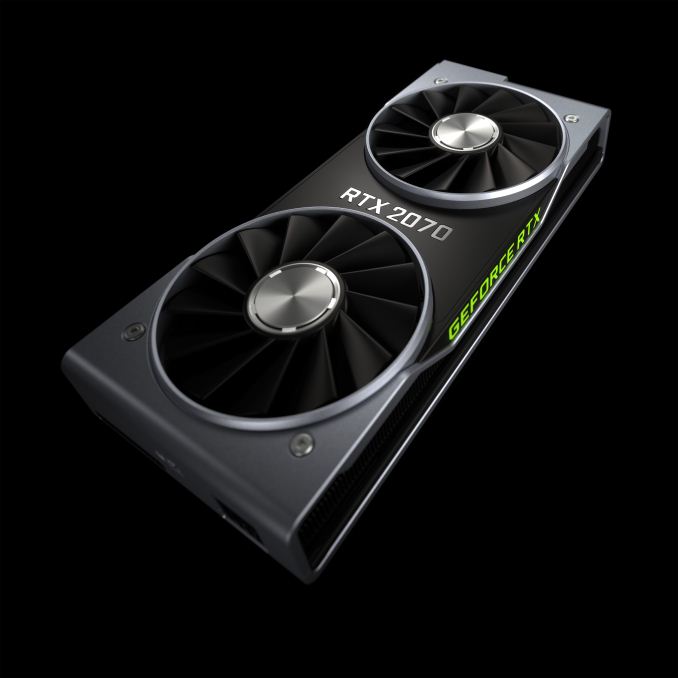








223 Comments
View All Comments
BurnItDwn - Monday, August 20, 2018 - link
Video Card pricing is insane now even after they have reduced a little bit after ecoin crashes.Anand's Article on the Geforce DDR shows the appropriate response to GPUs that cost more than the motherboard + SSD + Ram + CPU combined.
https://www.anandtech.com/show/429
Yojimbo - Tuesday, August 21, 2018 - link
But the graphics card is more important than the motherboard, SSD, RAM, and CPU when it comes to games performance. Basically, if you have "replacement level" equipment for all those things other than the GPU and you spend a lot on a GPU you are much better off than spreading your money around equally. So of course the cost of the system will tilt more and more towards the graphics card over time (it's not just the GPU, because the on-card DRAM is also very important).Note, however, that the die area dedicated to the GPU (and the on-board DRAM) has also increased over time. The GeForce 256 seems to have had a 111 or 125 square mm die size. The RTX 2080 Ti has a 754 square mm die size. That's a 6+ times increase. Almost all of that increase comes from more execution units, added memory controllers, etc, and not things like video encoders. Compare the die area dedicated to VRAM on the GeForce 256 with the GTX 1080 Ti. It looks to me like it's a lot more on the GTX 1080 Ti. The Intel Pentium III 700 had a 105 square millimeter die size. The latest core i7s are about 300 square mm, I think, and that's including an integrated GPU and a bunch of other stuff that wasn't on the Pentium III 700 die (they were part of the chipset on the motherboard at the time) but take up a significant amount of die area. The die area for the CPU hasn't really changed much.
Oxford Guy - Tuesday, August 21, 2018 - link
RT, Tensor, and other stuff that may not be particularly relevant enough to gamers during the majority of the lifetime of the GPU chip take up a lot of space, looking at diagrams I've seen in the past.Die size isn't the whole story. If it were, the Fury X would have been a big hit.
Yojimbo - Tuesday, August 21, 2018 - link
We are discussing the trend in the pricing of GPUs relative to other components. Since this trend has been a long-term trend that has not reversed we can conclude that the GPU is providing more and more of the value of the gaming systems.And regardless of how well a particular GPU is executed, larger die sizes incur higher costs and so demand higher prices. Fury X was not executed well. It had a memory capacity limit that, while probably not detrimental to performance turned people off. It didn't offer a performance advantage over cards based on NVIDIA chips that were cheaper to produce. Maybe the Turing RTX line will be a similar failure. But, again, we are talking about the general trend of GPUs taking up more and more of the cost of gaming systems. The Turing RTX fits that trend, and so it is not an outlier.
PeachNCream - Tuesday, August 21, 2018 - link
Let us know how running a game works for you without a CPU, motherboard, RAM, and SSD since the graphics card is more important than any of them. :PYojimbo - Tuesday, August 21, 2018 - link
Let me know how it is fielding a baseball team without a 2nd baseman, a shortstop, a catcher, a pitcher, etc, if Mike Trout is more valuable than any of them :PQED!
Bulat Ziganshin - Monday, August 20, 2018 - link
Turing is definitely consumer-grade Volta. In each second generation, NVidia had the computing card which added high-performance FP64 cores plus somewhat increased resources per core. In Fermi generation, it was CC 2.0architecture, in Kepler generation we had CC 3.7, and in Pascal gen it was CC 6.0. So, it seems that Volta and Turing is the same thing but Turing, as usually, reduces FP64 resources. There is possibility that it drops even more resources compared to Volta, f.e. has less registers or less shared memory per SM, or more ALUs per SM (which effectively reduces registers/sharedmem per ALU). By nio means it can increase anything compared to Volta, including bandwidth!! Moreover, Volta PR sais that bandwidth increased 4x, so 2x increase stated may really mean 2x less compared to Volta :DBut overall, they don't have resources to produce two different architectures, so most probably it's just Volta minus FP64 plus RTX. In particular, area (and number of transistors) per ALU is pretty close to that ratio in Volta, and this is perfectly explained by replacing FP64 cores with RTX cores, so overall SM area doesn't changed much.
maroon1 - Monday, August 20, 2018 - link
Battlefield 5, shadow of tomb raider, and the new Metro will support ray tracing.Oxford Guy - Tuesday, August 21, 2018 - link
Nvidia benefit from having near monopoly power. Back when AMD released a consumer GPU with a hardware tessellator, it couldn't even get Microsoft to add support for that in DirectX.Yojimbo - Tuesday, August 21, 2018 - link
NVIDIA does not have near monopoly power. Who exactly are they pressuring with their market share and how? Don't confuse having a dominant market share with "monopoly power". They are two different things. The first is simply a result of economics, the second is an illegal coercion.In fact, NVIDIA only has a dominant share in PC gaming. But PC gaming and console gaming are a shared space as far as most large games developers are concerned. AMD accounts for a greater number of GPUs that are used to play games than NVIDIA does.
Microsoft is leading its own push to get real time ray tracing in graphics. I doubt Microsoft cared too much about a hardware tessellator. AMD is part of this push as well, by the way. NVIDIA is just first. When AMD comes out with their "look at the amazing thrills of ray tracing" presentation a year or whatever later, most of these people in this forum dumping on NVIDIA will be saying "boo-ya!"